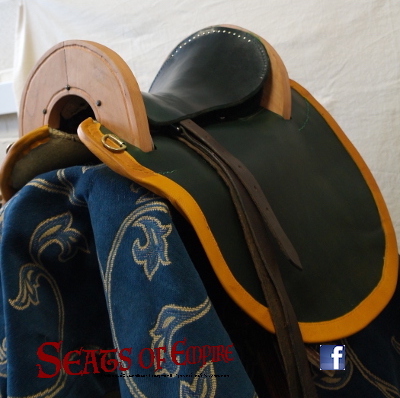Saddles — transitional and timeless
Stirrup-bearing saddles were carried into Europe in the later fifth and early sixth century by the migrating tribes who overran the Western provinces of the Roman Empire. The Romans adopted them in the sixth century, but the fact that the author of the military manual known as the Stratêgikon written c.602 (where they are first mentioned in surviving literature) still regards it as necessary to tell his readers that saddles ought to have stirrups suggests that they remained something of a novelty that was not yet fully accepted. The word used is σκάλα / scala, that is a stair or ladder, which tells us that the Romans first regarded them as an aid to mounting, rather than as something essential to riding. In fact, across Europe the dominant riding style does not change to become fully dependant upon stirrups for a thousand years after this. It is impossible to establish the process and chronology of the diffusion of stirrups across European societies. They are not shown in art until well into the ninth century, but were probably widely established in Western nations before that
The primordial form of saddle having low arches has never disappeared, although as cavalry developed as a primary military mode in the West, low saddles were relegated to civilian riding, although continued in military use in the East until influenced from the West during the era of the Crusades.
This example was designed to cover the transitional period from the fall of the Western provinces of the Roman Empire (576 CE) without stirrups to the Carolingian and Ottoman era with stirrups (ninth—tenth centuries). It was accompanied by the matching bridle.

An earlier medieval saddle.

Another view of the earlier medieval saddle with stirrups.
A timeless style of saddle. Used as is or with stirrups.

Conversion of a modern Universal pattern military saddle
to produce a late antique — medieval steppe / near eastern style.
Copyright: Timothy George Dawson 2022, 2024

